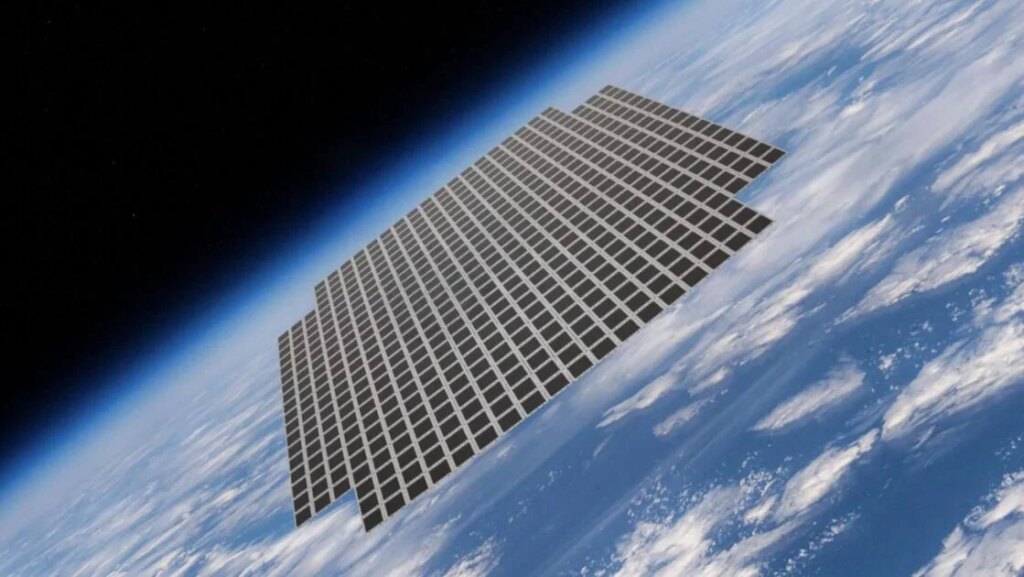Don’t miss out on our latest stories. Add PCMag as a preferred source on Google.
After several months of delays, AST SpaceMobile looks ready to launch its first next-gen “BlueBird” satellite before the end of the year as it competes with SpaceX’s cellular Starlink effort.
In an earnings report on Monday, AST SpaceMobile said the BlueBird 6 satellite, also known as FM1, is expected to launch in the first half of December. India’s space agency, ISRO, also told local media that the satellite is scheduled to fly in the second week of December.
AST first aimed to launch its first batch of next-generation BlueBird satellites in Q1 2024. But it later said it planned on only launching one next-gen BlueBird, a prototype called the FM1, in Q2, before pushing that back three times, with some concern it might not occur until January.
(Credit: AST SpaceMobile)
Monday’s announcement pegs the launch to early next month. The company hasn’t explained the delay. But the second-generation BlueBird satellites are about three times larger than AST’s first-gen models, and will each span at over 2,000 square feet, making them exceptionally large and heavy. In addition, the US Federal Communications Commission only granted the company an experimental license to test the FM1 back in July, following objections from rival SpaceX.
Despite the delays, AST is indicating it plans on launching another second-generation BlueBird, dubbed the FM2 soon, possibly in December. “BlueBird 7 (FM2) expected to ship to Cape Canaveral in November with orbital launch anticipated shortly thereafter,” the company said in the earnings report.
Ironically, SpaceX has been contracted to launch FM2 using a Falcon 9 rocket. The satellites are crucial to AST’s business of supplying satellite connectivity to everyday phones, including powering messaging and video chats in cellular dead zones. AST has entered into partnerships with AT&T and Verizon to supply the satellite service to customers sometime next year.
Recommended by Our Editors
However, AST has repeatedly said it needs between 45 to 60 satellites in orbit to offer continuous service across the US. So, launching enough satellites on time is crucial to the company’s effort to compete with SpaceX’s cellular Starlink, which is already available through T-Mobile and soon Boost Mobile.
For now, AST is saying it’s “on track for five orbital launches expected by the end of Q1 2026, with launches every one to two months on average to reach [a] goal of 45 to 60 satellites by end of 2026.” In an earnings call, the company also said it was “fully funded” for a total of 100 plus satellites to improve the constellation’s coverage and capabilities globally.
In the call, AST executives also mentioned that a single SpaceX Falcon 9 has the capacity to carry around three next-generation BlueBird satellites. Meanwhile, Blue Origin’s more powerful New Glenn should be able to carry an estimated 18. The company also agreed with an estimate that the AST constellation can kick off beta tests in North America once it has around 25 satellites in orbit.
Get Our Best Stories!
A Smart, Bold Take on the Wireless World
Sign up for the Fully Mobilized newsletter to get our top mobile stories delivered right to your inbox.
Sign up for the Fully Mobilized newsletter to get our top mobile stories delivered right to your inbox.
By clicking Sign Me Up, you confirm you are 16+ and agree to our Terms of Use and Privacy Policy.
Thanks for signing up!
Your subscription has been confirmed. Keep an eye on your inbox!
About Our Expert
Michael Kan
Senior Reporter
Experience
I’ve been a journalist for over 15 years. I got my start as a schools and cities reporter in Kansas City and joined PCMag in 2017, where I cover satellite internet services, cybersecurity, PC hardware, and more. I’m currently based in San Francisco, but previously spent over five years in China, covering the country’s technology sector.
Since 2020, I’ve covered the launch and explosive growth of SpaceX’s Starlink satellite internet service, writing 600+ stories on availability and feature launches, but also the regulatory battles over the expansion of satellite constellations, fights with rival providers like AST SpaceMobile and Amazon, and the effort to expand into satellite-based mobile service. I’ve combed through FCC filings for the latest news and driven to remote corners of California to test Starlink’s cellular service.
I also cover cyber threats, from ransomware gangs to the emergence of AI-based malware. Earlier this year, the FTC forced Avast to pay consumers $16.5 million for secretly harvesting and selling their personal information to third-party clients, as revealed in my joint investigation with Motherboard.
I also cover the PC graphics card market. Pandemic-era shortages led me to camp out in front of a Best Buy to get an RTX 3000. I’m now following how President Trump’s tariffs will affect the industry. I’m always eager to learn more, so please jump in the comments with feedback and send me tips.
Read Full Bio

